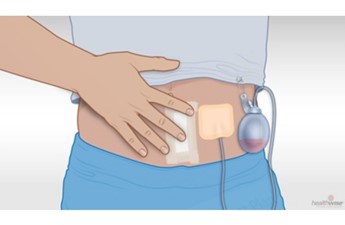A preschool-aged child who is experiencing respiratory distress is brought to the emergency department by the parents. The child is anxious, has a temperature of 102.8° F (39.3° C), and is drooling from the mouth while leaning forward when sitting. Which action should the nurse prepare the child for next?
Schedule the child for a STAT magnetic resonance imaging (MRI) of the neck.
Provide a nebulizer treatment with bronchodilators.
Obtain bedside trays for intubation or tracheotomy by the healthcare provider.
Begin prescribed intravenous antibiotic administration.
The Correct Answer is C
Choice A reason: Scheduling the child for a STAT magnetic resonance imaging (MRI) of the neck is not a priority action for the nurse. MRI is a diagnostic test that uses magnetic fields and radio waves to produce images of the internal structures of the body. MRI of the neck may be useful to rule out other causes of respiratory distress, such as tumors, abscesses, or foreign bodies, but it is not an urgent procedure. Moreover, MRI requires the child to lie still for a long time, which may be difficult or impossible for a child who is anxious and in respiratory distress.
Choice B reason: Providing a nebulizer treatment with bronchodilators is not a suitable action for the nurse. Nebulizer is a device that delivers medication in the form of a mist that can be inhaled into the lungs. Bronchodilators are medications that relax the smooth muscles of the airways and improve airflow. Nebulizer treatment with bronchodilators may be helpful for children with respiratory distress caused by asthma, bronchiolitis, or chronic obstructive pulmonary disease, but not for children with respiratory distress caused by upper airway obstruction, which is the most likely scenario for this child.
Choice C reason: Obtaining bedside trays for intubation or tracheotomy by the healthcare provider is the most appropriate action for the nurse. Intubation is a procedure that involves inserting a tube through the mouth or nose into the trachea to secure the airway and provide ventilation. Tracheotomy is a surgical procedure that involves creating an opening in the neck and inserting a tube into the trachea to bypass the upper airway obstruction. Both procedures are life-saving interventions for children with respiratory distress caused by upper airway obstruction, which is the most likely scenario for this child. The nurse should prepare the necessary equipment and assist the healthcare provider in performing these procedures.
Choice D reason: Beginning prescribed intravenous antibiotic administration is not a relevant action for the nurse. Antibiotics are medications that kill or inhibit the growth of bacteria that cause infections. Antibiotics may be indicated for children with respiratory distress caused by bacterial infections, such as pneumonia, tonsillitis, or epiglottitis, but not for children with respiratory distress caused by non-infectious causes, such as foreign bodies, anaphylaxis, or congenital anomalies. Moreover, antibiotics are not an immediate intervention for respiratory distress, as they take time to exert their effects.
Nursing Test Bank
Naxlex Comprehensive Predictor Exams
Related Questions
Correct Answer is A
Explanation
Choice A reason: This is correct because it addresses both the physical and emotional needs of the child and the mother. The nurse should provide comfort and reassurance to the mother and explain that occasional accidents are normal and not a sign of failure.
Choice B reason: This is incorrect because it implies that the mother is incompetent and needs external help. The nurse should first establish rapport and trust with the mother before suggesting any resources or interventions.
Choice C reason: This is incorrect because it suggests that there is something wrong with the child's kidneys, which may alarm and offend the mother. The nurse should not jump to conclusions without assessing the child's history and symptoms.
Choice D reason: This is incorrect because it generalizes and stereotypes boys as being slower than girls in toilet training. The nurse should not make assumptions based on gender and should respect individual differences.
Correct Answer is C
Explanation
Choice C is correct because observing the incision site of a client who was discharged home with a suprapubic catheter can help detect signs of infection, bleeding, or healing problems. The nurse should inspect the incision site for redness, swelling, drainage, or odor and report any abnormal findings.
Choice A is incorrect because measuring abdominal girth of a client who was discharged home with a suprapubic catheter is not necessary unless there are signs of urinary retention or obstruction. The nurse should monitor the urine output and color and report any changes.
Choice B is incorrect because assessing perineal area of a client who was discharged home with a suprapubic catheter is not necessary unless there are signs of infection or irritation. The nurse should instruct the client on how to keep the perineal area clean and dry and report any discomfort or discharge.
Choice D is incorrect because palpating flank area of a client who was discharged home with a suprapubic catheter is not necessary unless there are signs of urinary tract infection or kidney involvement. The nurse should ask the client about any pain or tenderness in the flank area and report any positive findings.

Whether you are a student looking to ace your exams or a practicing nurse seeking to enhance your expertise , our nursing education contents will empower you with the confidence and competence to make a difference in the lives of patients and become a respected leader in the healthcare field.
Visit Naxlex, invest in your future and unlock endless possibilities with our unparalleled nursing education contents today
Report Wrong Answer on the Current Question
Do you disagree with the answer? If yes, what is your expected answer? Explain.
Kindly be descriptive with the issue you are facing.
